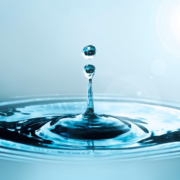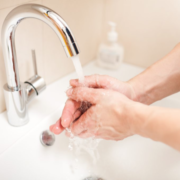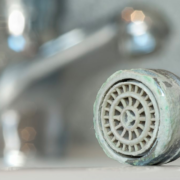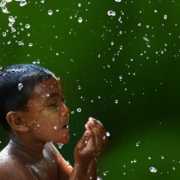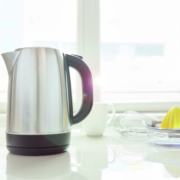The better the drinking water, the healthier people, animals and plants live. In Austria, high-quality water usually reaches us through the pipes. This is ensured primarily by the Drinking Water Ordinance, which deals with the requirements of water quality. However, it does not deal with mineral water. There is a separate law for this (Mineral Water and Spring Water Ordinance) because different requirements apply.
Because water is placed on the market as food, it must also comply with the provisions of the Food Safety and Consumer Protection Act. However, there is no separate section on the subject of water here. All applicable hygiene regulations also have to be observed for drinking water. Another important source is the Austrian food book. This is not a legal provision, but an “objectified expert report”. There are quality criteria here, some of which go beyond the drinking water laws. This includes, for example, the methods with which water can be disinfected or how it can be preserved in emergencies.
In the jumble of paragraphs, ordinances and guidelines, it is not easy to see what is really important. We have dealt intensively with the legal texts and summarized the essentials.
Requirements for our drinking water
Drinking water must not endanger human health. This means that all foreign substances may only occur in a certain number that is not harmful to health. Even if you drink the water all your life. According to the Drinking Water Ordinance, there are limit values for chemical substances and for microorganisms.
Further quality criteria are listed in the food book. Water that is naturally of high quality is primarily intended to ensure the supply of drinking water. But this is not always available. If other waters are used, the best possible quality should be ensured during extraction. If the water does not meet the high requirements, it can be treated. The treatment either ensures the drinking water quality or improves technical characteristics. If, for example, the pH value is incorrect, the water could damage pipes – these properties must then be changed. However, the water is disinfected more often. The procedures that can be used are clearly defined. In addition to various treatments with chlorine, UV radiation and disinfection with ozone may also be used.
Regular controls ensure drinking water quality
To ensure that the drinking water quality is right, it is constantly checked. The supply systems are obliged to carry out so-called self-control. Small systems only have to have the water checked once a year, large suppliers up to 48 times a year. The samples must be taken at “suitable locations”. Usually these are the places where the water leaves the system. If, for example, the effectiveness of a disinfection measure is to be tested, the review may also take place at another point.
In addition to the normal limit values, there is also the so-called indicator parameter value. This is set higher than the associated limit value. If it is exceeded, the cause must be investigated.
The chemical substances and microorganisms that are examined can be found here here and here listed again. If the water exceeds these limit values, the supplier must take measures. The operator of the water supply system must be able to provide perfect quality again within 30 days. However, such a case must by no means go quietly over the stage. The operator must inform the water consumer how high the measured value is and where the normal value is. In addition, precautionary measures must be stated. Of course, it is important that the information reaches all consumers, for example through a suitable notice.
Exceptions by the governor – short-term loopholes
In extreme situations, the water may exceed a limit value for a longer period of time. That affects chemical pollution. If an increased value is measured and the drinking water supply cannot be established in any other way, a suspension can be requested. For this purpose, the operator of the water supply system submits an application to the governor.
The governor can then issue a notice that allows the limit values to be exceeded. This can happen for a maximum of three years. A time limit is specified in the notification and also by how much the water may exceed the limit value. At the same time, a monitoring program starts – for example with more frequent examinations of the water.
There is no need for a notice of exception for pollution to a minor extent that water suppliers can eliminate within 30 days.
So you know how things are going with your water
The obligations of operators of water supply systems also include informing customers. Once a year they have to report on the current quality. This is usually done through the water bill or the community newspaper. The following measured values must be given in the quality reports:
- nitrate
- Pesticides
- Hydrogen ion concentration (pH value)
- Total hardness
- Carbonate hardness
- potassium
- Calcium
- magnesium
- sodium
- chloride
- sulfate
Many operators also make this measurement data available on their homepage. Can’t find the last water bill or information on the Internet? You can also find out about the water quality with a short phone call to your supplier.
In some cases it is possible that the water quality fluctuates significantly. This is the case every now and then, especially in summer. When it is particularly dry, water from different sources is sometimes mixed to provide drinking water. In this case, the fluctuation range must also be specified.
The Food Safety and Consumer Protection Act also stipulates that the drinking water report must be published once a year. This report provides information on the water quality of all large water supply systems. This includes those who provide over 1000 cubic meters of water a day or at least 5000 people.
Better safe than sorry – when you need your own water test
These strict requirements and regular controls only apply to water supply systems. A tenth of Austrians, however, provide themselves with water – from a house well. However, they often neglect controls. The government recommends that house wells be extensively examined at least once a year. Just with a water test the need for action can be identified.
Another problem with drinking water quality is often the pipes in the house. Especially when they are very old, they can emit dangerous substances – in some old buildings, for example, there are still lead pipes. If you suspect that something may be wrong with your pipes, you can also investigate this with a water test.

